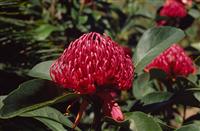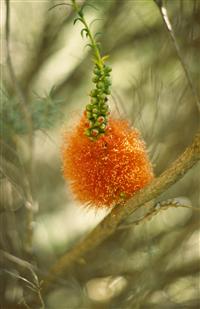Australian Natives
Australia has one of the largest and most diverse range of indigenous plants in the world, that included plants suited cultivation in almost any part of the world.
Many natives have evolved to withstand harsh conditions.
Some species are tolerant of saline conditions, some to arid conditions, some make excellent windbreaks, some withstand pollution, others tolerate flooding and more.

It is important to remember that the natives that come from your own area have evolved to cope, even thrive under those local conditions.
Read more below
DISTANCE EDUCATION COURSES
ACS offers 100 hour courses including the following. Click on a course for more information.
 Australian Natives I
Australian Natives I
Australian Natives II
Acacias
Australian Native Trees
Australian Native Ferns
Eucalypts
Growing Grevilleas
WHY GROW AUSTRALIAN PLANTS?
An extract from the book Growing Australian Native Plants by John Mason (click here to order)
There are a number of reasons that make Australian Natives worth growing. There is an enormous variety of Australian natives (at least 20,000 species e.g. About 700 species of Acacias, over 500 species of Eucalypts just to mention two genera). There are native plants for just about any situation from deserts, to rainforests, to alpine regions.
Many Australian natives have extremely attractive flowers, fruit, foliage or habit, often unlike anything found in plants of other continents. A large percentage of the plants native to Australia are endemic‑that is they do not occur anywhere else in the world. By growing natives we can help ensure that these species are preserved. The flora and fauna of Australia have evolved together over long periods of time.
By growing Australian natives we encourage the survival of native fauna.
Many Australian native plants are new to the world of gardening. Those which have been grown are mostly so new to cultivation that we are still learning how to grow them properly. Unlike plants from some other countries, relatively few Australian plant species have yet undergone extensive plant breeding or plant selection programs. We are still often working with the raw material from the bush whereas plants such as the camellias & roses have been grown, hybridized & generally studied for hundreds of years. There are still a lot of horticulturally valuable species which haven't even been collected from the wild as yet. There are a few notable exceptions, however, such as the Kangaroo Paws (Anigozanthos sp.) and the Christmas Bells (Blandfordia sp.) which have been the focus of breeding and selection programs over the last few years.
THREE TYPES OF NATIVE FLORA
Australian native plants can be divided into three main groups....
- *INDO MELASIAN (Or ASIAN) FLORA Plants evolved from species originating in south‑east Asia. These are typified by plants from tropical or sub‑tropical rainforests in the north of the continent.
- ANTARCTIC FLORA Plants which have evolved from species present when the Australian continent was linked with what is now Antarctica. These plants are typified by broad‑leaved deciduous and evergreen species such as beeches, sassafras, conifers & other plants from southern (cold climate) rainforests. Many of these plants have affinities with species in New Zealand, South America and South Africa.
- SCLEROPHYLL FLORA Typified by Eucalypt forests & woodlands, these plants clearly evolved inside Australia. They are more widespread than the other two types, dominating the majority of the continent, particularly in the more arid and semi‑arid regions.
You may also be interested in....